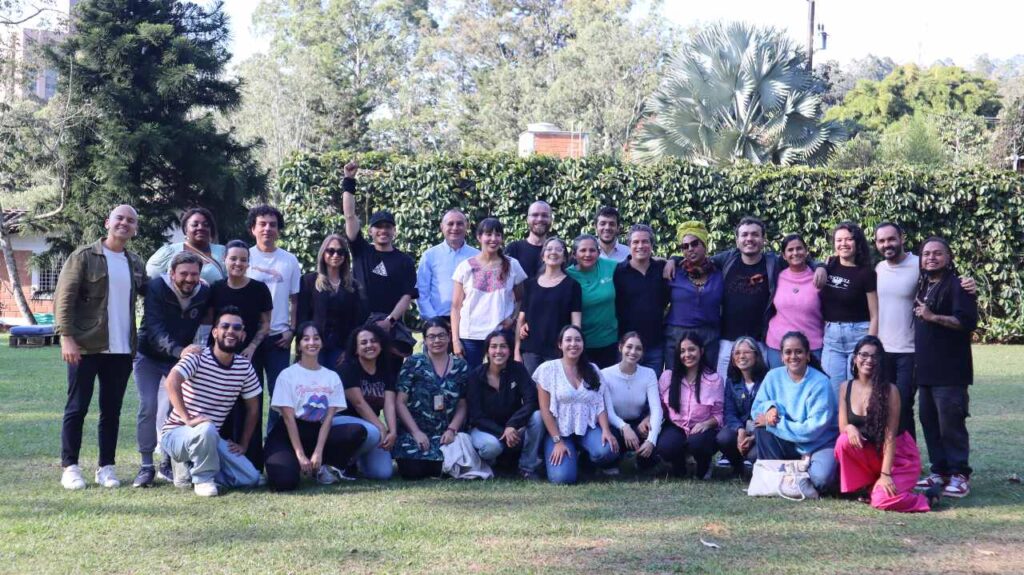id=”605″ id=”post-1844″ class=”wp-post-content-block ” itemscope itemtype=”http://schema.org/BlogPosting” itemprop=”blogPost”>
The unsung heroes: Hivos timeline highlights women in Lebanese History
Hivos is launching their timeline of the women’s movement history in Lebanon through an exhibition on May 9, 2019. The open-access exhibition taking place in Beit Beirut, Achrafieh, will remain on display until May 11, from 2 pm until 8 pm.
By Laudy Issa
In 1943, Lebanese nationalists took to the streets to demand the release of the first post-independence Lebanese president and other political figures who were arrested and imprisoned under French Mandate. Among these protesters were women, and lots of them. These women fought for Lebanon’s independence despite being part of an unrecognised union that was simultaneously pushing for the recognition of women as equal citizens with the same civil rights as men.
Despite being an indisputable force and source of strength in the country’s history, we seldom remember these women. Similar to the female pioneers who came before them and those who came after them, their names and actions were disregarded by Lebanese history books. But Hivos remembers these women.
Funded by FLOW fund from the Dutch Ministry of Foreign Affairs, Hivos’ Women Empowered For Leadership (WE4L) Program is launching a comprehensive historical timeline of the women’s movement in Lebanon between 1906 and 2017.
“The timeline is important because we need to document our collective history,” said Mira Bouchmouny, the WE4L Lebanon program coordinator. “It is very easy for people to dismiss our work as taking place in a vacuum or as a western intervention, this demonstrates the contrary and places our work within a strong history of achievements. It shows our current success’ and the work done in the past that has been building up to the success of tomorrow.”
Hivos partnered with Lebanon Support, a non-profit civil society research centre, and URIKA, a Lebanese digital agency, under the WE4L program to develop the digitally-available and easily-accessible record of Lebanese women’s movement leaders, contributions, and achievements.
“Hivos decided to do a timeline as we felt it was important to contribute to the highlighting of our history on an open access platform, as this would give greater context to our current work on empowering women in leadership,” said Bouchmouny.
The “Women, Power, and Politics: Timelines and Milestones” timeline maps out key female figures in society and feminist initiatives in Lebanese history, from the first woman to run for Lebanese Parliament to the annual Labor Day marches of migrant domestic workers who are excluded from national labor laws and governed by the restrictive Kafala system. The timeline also allows researchers, activists, and everyday civilians to draw parallels between the present and past.
“This year the feminist organisations took to the streets for international women’s day fighting for our economic rights and justice, building on a history that had been forgotten but that is highlighted in the timeline, with women in 1974 having marched alike against the country’s flawed economic policies,” said Bouchmouny. “This timeline makes me both proud of the achievements of the past while highlighting the road.”
By documenting women’s struggles and both their legal and political achievements over the course of a hundred years, Hivos challenges and redefines pre-established beliefs on women’s roles in the context of national history.
The timeline remembers pioneering women who had otherwise been forgotten from the public psyche. The initiative from the Women Empowered For Leadership program sheds light on the likes of Labibah Hashim, credited with being one of the first to publish women’s periodical and calling for the right to be part of the political decision-making process from as early as 1906. Others highlighted in the timeline include Khola Arsalan, who played a vital role in providing medicine and treatment to those who were injured in the 1975 Lebanese Civil War, and Salwa Nassar, the first woman physicist in Lebanon.
The timeline was launched through a three-day exhibition at Beit Beirut, a restored Civil War landmark. According to Bouchmouny, the exhibition was meant to provide an easily-accessible means of sharing women’s history with the public through “an interactive artistic form that a speaks to a wider audience and gets them excited to visit website.”
“Art has always been at the forefront of telling our history and continues to be used to do the same with this exhibition,” continued Bouchmouny. “We imagine, work towards and build on what we can effectively see.”
Throughout Lebanese history, women have been largely ignored or trivialised. The timeline allows us to reread that same history from a feminist perspective, providing the necessary data that creates an authentic representation of women’s lives and how historical gender inequality has shaped our modern society and its struggles.





